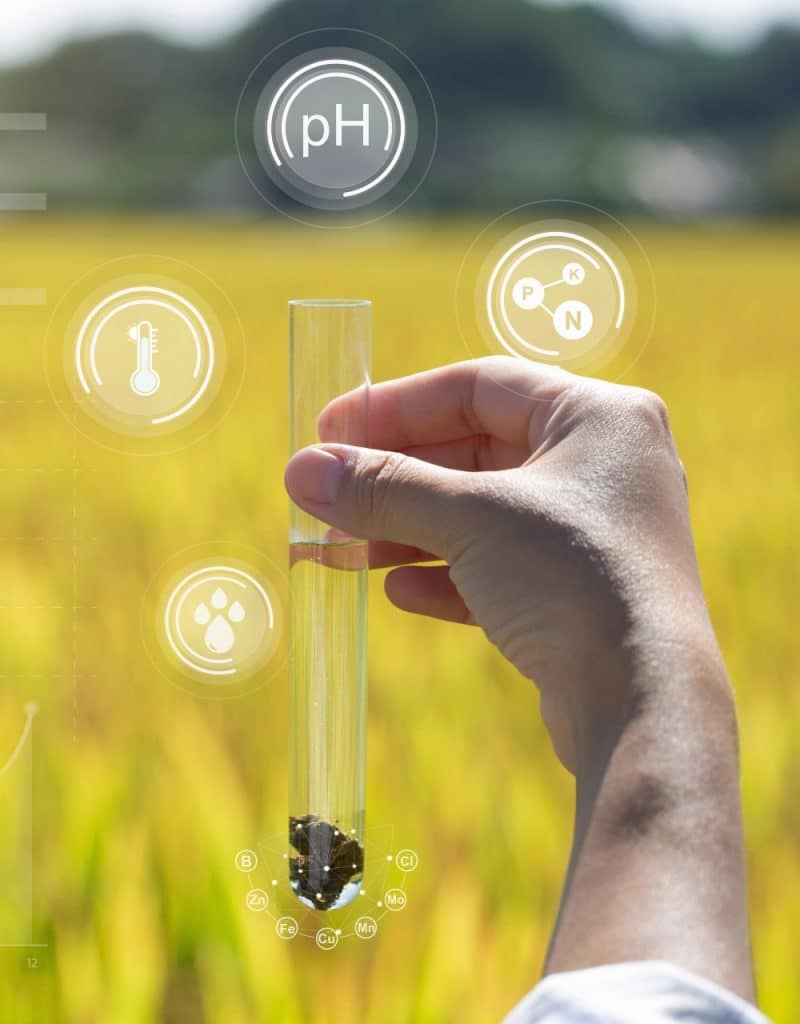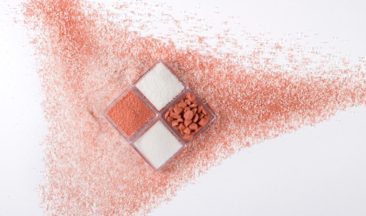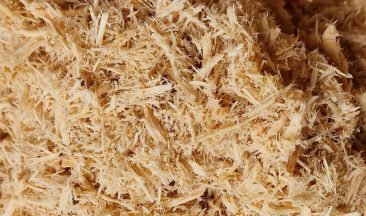Soil is the powerhouse behind every slurp of sweet, juicy summer fruit or crunch of nutritious, nutty seeds. It’s the encouraging factor for plants to form strong roots and survive the winter.
Soil is the sustaining factor for life on earth. The upper crust of the Earth is full of organisms, liquids, and mineral particles that plants need to grow and thrive. Plants rely on the soil for everything from disease resistance to winter hardiness to fruit quality and flavor. Over a quarter of Earth’s biodiversity lives in soil.
Everyone who eats benefits from the quality of soil. 95% of food production is soil-based! As the population grows, there are more mouths to feed, straining soil as a natural resource. Even today, over 2 billion people experience micronutrient deficiencies in their diet, which impact factors of human health ranging from brain and muscle function to fetal development and immune system health.
Soil has been declared finite by the United Nations, which predicts catastrophic soil loss within 60 years. Worldwide, soil degradation could cost $23 million by 2050 due to the loss of food, ecosystem services, and income. Soil health in agriculture is critical, with near-term impacts likely. Taking steps toward understanding, assessing, and improving soil health is critical for the future of food, agriculture, and life.
How does improving soil usage impact agriculture and the environment?
Improving soil usage delivers three broad benefits: it improves the quality and yield of harvests, conserves existing local ecosystems, and contributes to carbon sequestration and the reduction of greenhouse gas (GHG) emissions. Recognizing that soil is a precious resource and an integral part of the biodiversified global ecosystem is the first step toward better soil usage.
The actual process of improving soil usage requires tailored and data-driven localized solutions. Sustainability is at the heart of soil improvement, and sustainable practices like crop rotation, cover cropping and minimal tillage can deliver a rapid improvement in overall soil quality. A key pillar of any soil improvement strategy is balanced fertilizer application. An optimized crop nutrition solution (combined with the use of biostimulants) will enhance soil fertility, while increasing crop yields, and improving long-term productivity.
Digging into soil health
Healthy soils are the foundation of a healthy life. Soil health refers to the ability of soil, as a living system, to sustain biological productivity, animal and plant health, and environmental quality. Maintaining soil health requires conservation and intentional management of soil health principles. It’s worth it, though. Life, dependent on soil, cannot thrive in unhealthy soils – creating major downstream impacts on human, animal, and plant health.
Healthy soil performs five functions that enable clean air and water and healthy plants and organisms. Those five functions are regulating water, sustaining plant and animal life, filtering and buffering potential pollutants, cycling nutrients, and providing physical stability and support.
Soil health is important in agriculture due to the dependency on soil for the majority of food production. Healthy soils are the foundation for high yields, high-quality crops, and long-term cropping potential. Healthy soils also have the capability to sustain the environment. Soil contains more than three times the amount of carbon in the earth’s atmosphere – and unhealthy soils release that carbon, contributing to greenhouse gas emissions.
Composition of healthy soil
The mix of soil ingredients is referred to as soil composition. Soil composition is influenced by its age, parent material, climate, topography, and biota. Soil is composed of five main ingredients, whose ratios differ depending on location.
The five main soil ingredients are minerals, soil organic matter, living organisms, gas, and water. Soil minerals are further classified by particle size into the categories of sand, silt, and clay. Clay particles are the smallest, and sand particles are the largest.
Soil composition can be broken into two categories: biotic and abiotic factors. Biotic factors are things that are living currently or were once living. Examples of biotic factors are plants and insects. Abiotic factors include any non-living components of soil, such as minerals, water, and air.
Soil composition differs depending on location. For example, the state of Iowa in the United States has high organic matter due to the breakdown of prairie grasses. In comparison, Hawaii has volcanic ash-containing soil that drains well. The soil composition of each place lends itself to different plants and animals that see benefits from these unique characteristics.
Farmers and soil scientists use soil testing to understand the composition of soil, as well as other information related to soil health. This information can help farmers make informed decisions about what to grow on site-specific soil, what tillage practices to use, and even what seeding rates will perform best on that land.

Soil health assessment
Soil leaves clues behind about its health.
One easy-to-use tool for sensing soil health is part of the five senses – smell. The distinct smell of geosmin from beneficial actinobacteria microbes means soil is healthy. Metallic-smelling soil is a sign of imbalance.
There are visual signs of soil health, too. Roots that reach straight down point to healthy pores in the soil, and earthworms that tunnel through the soil indicate good organic matter. Soil color can indicate the quantity of organic matter in the soil.
In fact, soil organisms are a sign of soil health because they are responsive to climate and management practices. Soil organisms play a big role in water holding capacity, organic material decomposition, and nutrient recycling – all big factors in the ability of plants to thrive in that soil. Both the number and diversity of soil organisms are signs of soil health.
Beyond the basics, soil health can be understood through four main indicators. Soil organic matter and physical, chemical, and biological characteristics all tell a story about soil health.
Soil organic matter is a clue to nutrient retention and soil fertility, structure, stability, and erosion. High soil organic matter is a positive sign that soil is healthy.
Physical characteristics of soil include bulk density, soil structure and depth, and soil water holding capacity. These characteristics point to soil’s ability to retain and transport water, soil porosity, and tilth. They can also be used to estimate crop productivity potential, which is when considering the importance of soil health in agriculture.
Soil’s chemical characteristics include organic matter content, electrical conductivity, soil pH, cation exchange capacity, and nutrient levels in soil. Assessing the chemical aspects of soil indicates the level of plant available nutrients and provides information to build a nutrient management plan. It can also show the potential for nutrient loss.
Earthworms, microbial biomass, particulate organic matter, soil respiration, soil enzymes, and total organic carbon are all biological indicators. These indicators help assess soil productivity and nitrogen-supplying potential as well as microbial activity. The biological analysis provides information on the overall health of the soil, the soil response to management practices, and its potential for producing high-yielding crops.
Soil testing can also reveal some of the soil’s secrets. Contaminants, metals, nutrient levels and soil pH can be measured with soil tests. Soil tests can also provide valuable information for nutrient management decisions, ensuring that the right fertilizer source, right rate, right time, and right place (the 4 R’s of soil health) are taken into consideration for that specific soil.
Threats to soil health
More than 50% of agricultural soils are moderate to highly degraded. High dependency on soil for growing food, fuel, and fiber means soil health in agriculture is important for everyone. But threats to soil health are everywhere, and there’s not just one culprit to blame. Erosion, pollution, over-cultivation, improper fertilizer application, and overgrazing are all soil health threats.
Soil erosion is the wearing of topsoil through natural factors, such as water and wind, as well as mechanical practices like cultivating. Over-tilling soils and over-grazing can contribute to soil erosion. Soil is a finite resource, and once it has eroded, it’s gone – and it becomes sediment, which can be a threat to the environment.
Contaminants from industrial pollution, atmospheric deposition, and excess pesticides can all accumulate in soil, causing it to become polluted. For example, seed treatment used to prevent fungal diseases is one of the most significant pollutants in agricultural soils.
Soils can even become contaminated with heavy metals from air pollution and sewage, among other sources. Polluted soils are not healthy environments for bacteria, plants, and insects to live in. Some pollutants can limit plant growth and development and even lead to plant death.
Overapplication, improper timing, or incorrect placement of fertilizers can result in nutrients leaching through the soils, becoming environmental pollutants. However, the calculated and proper application of fertilizers is one strategy to foster sustainable soil health.
Underuse of fertilizers poses big problems as nutrients are not replenished after harvests thus producing loss of soil fertility. This leads to low crop yield and crop failure, which can lead to hunger, malnutrition, and poverty. The underuse of fertilizers also has a significant impact on soil health as it means that nutrients are being mined from soils and soil organisms do not have access to essential nutrients to grow and support the nutrient cycle.
Strategies for sustainable soil management
Soil health principles point to many management opportunities to maintain or restore soil health. By maximizing the presence of living roots, minimizing disturbance, maximizing soil cover, and maximizing biodiversity, it’s possible to work intentionally on improving soil health.
Maximizing the presence of living roots is possible in many ways. Growing a long-season crop and planting a cover crop when fields are normally fallow can ensure living roots are in the soil as long as possible. Living roots are part of the soil food web, as they maintain an area of high microbial activity called the rhizosphere. Living plant roots exude readily available microbial food that helps soil microbes cycle nutrients needed for plants to grow.
Biodiversity is key for improving soil health because a diversity of plant carbohydrates is required to support a diverse population of soil microorganisms. A lack of biodiversity limits cropping system potential and can introduce pest and disease challenges. Crop rotations are one way to maximize plant biodiversity, which in turn will maximize soil microorganism biodiversity.
Soil can be disturbed by physical activities, such as cultivation, which is often what comes to mind when thinking about soil disturbance. Over-cultivation can result in bare or compacted soils and disrupted soil microbes. But soils can be disturbed by chemical and biological activities, too. Over-application of fertilizers and pesticides can interrupt the relationships between living organisms in the soil. Overgrazing can increase soil temperature and increase runoff, reducing the soil food web.
Keeping the soil covered can go hand in hand with minimizing soil disturbance. Soil cover protects the soil from harsh rains, thwarts weeds, and provides habitat. It also maintains moisture and reduces soil temperature. Some crop decomposition can benefit soils through cycling nutrients, so growers must manage production practices like cover crops, crop rotation, and even harvesting residue management.
Judicious and balanced use of mineral fertilizers, combined with the use of organic sources (like green manuring, compost, and biofertilizers) is crucial to maintain soil fertility and nutrient supply at an optimum level for sustaining crop yields and preserving soil health.
More on the subject:
Fertilizers: The Basics
Biostimulants for Plants – Giving Nature a Nudge!
What is Polysulphate?
ICL’s commitment to sustainability
Protecting the planet through sustainable solutions to agricultural challenges is a key aspect of ICL’s business. Investing in environmental protection and dedication to preserving natural resources are core to ICL. Using cutting-edge technologies to develop unique, sustainable approaches positions ICL to advocate for caring for the Earth’s natural resources.
As a leading fertilizer manufacturer, ICL provides advanced solutions to improve yield while protecting the environment. ICL controlled-release fertilizers reduce nutrient loss and simplify nutrient application. This minimizes soil disturbance while still delivering necessary nutrients for high-yielding crops.
ICL fertigation fertilizers are applied with irrigation water, typically through a micro-sprinkler or a drip system In this system, the nutrients are distributed precisely and evenly in irrigation. The availability of nutrients is very high therefore efficiency is increased. It is a highly effective and flexible tool for controlling the placement, timing, and nutrient application method. This enables precise nutrition to be applied according to the soil fertility status and growth stage of any crop.
Polysulphate® is a natural mineral mined by ICL from underneath the North Sea that contains four nutrients: sulfur, potassium, magnesium, and calcium. It is a single complex crystal, totally natural, and ready to be used straight from the ICL mine on the fields. This natural, multi-nutrient mineral is approved for organic agriculture and has a low environmental impact as it has the lowest carbon footprint when compared to common fertilizers.
ICL’s biostimulants enhance soil health, resulting in improved nutrient uptake and productivity as well as increased tolerance and recovery from stresses such as heat, water, or disease.
To ensure proper application, ICL agronomists constantly train farmers, fertilizer dealers, and crop advisors on the correct use of ICL fertilizers by recommending proper dose and application time according to the crops and soil’s needs. This supports farmers to achieve balanced plant nutrition in sustainable, productive farming systems and preserving soil health and fertility.
Soil health in agriculture provides many important societal and environmental benefits. Soil is the bedrock of life, and working to restore soil health is paramount. Through innovation and environmental responsibility, ICL is continually paving the way to a more sustainable world.







